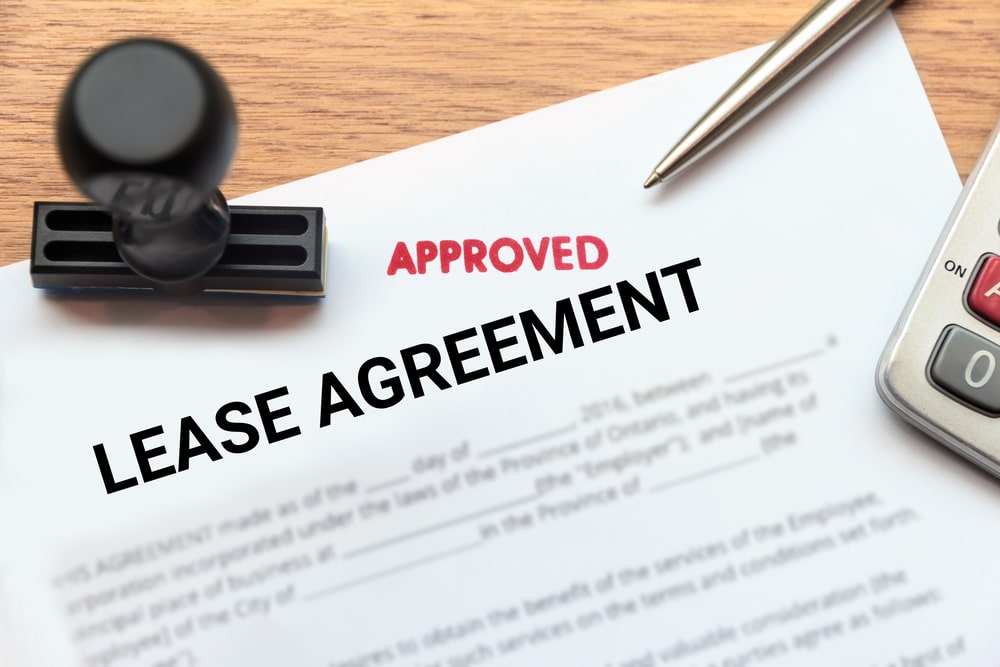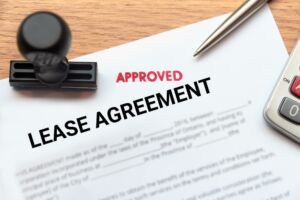A landlord and tenant dispute can quickly turn a smooth rental experience into a stressful situation for both parties. Typically, conflicts arise when the terms of a Lease Agreement are not clear or are breached – whether it is overdue rent and/or utilities, property maintenance issues, a termination of the Lease Agreement prior to its expiry, or damage to the property.
In Alberta, these disputes are governed by the Residential Tenancies Act and can be resolved through the Residential Tenancy Dispute Resolution Service (the RTDRS) or the Alberta Court of Justice, Civil Division.
Civil court agency services play a valuable role in resolving landlord-tenant disputes by providing affordable and efficient court agency representation. By offering practical and informed guidance, a civil court agent assists clients to understand their rights and responsibilities, can offer a review of a Lease Agreement to ensure compliance with the requirements of the Residential Tenancies Act, can assist in resolving disputes or if no resolution can be reached, providing civil court agency representation at the RTDRS or the Alberta Court of Justice, Civil Division.
Whether you are a landlord or tenant, or are planning to become one, this article provides valuable insights to help ensure a seamless rental process and avoid potential disputes.
A residential tenancy or Lease Agreement is crucial for protecting the rights of both landlords and tenants. A Lease Agreement:
- Affords Legal Protection – A Lease Agreement serves as a legally binding contract the landlord and tenant must follow once signed by both parties. If a dispute arises, the Lease Agreement provides a clear framework for resolving issues.
- Clarifies Responsibilities – The Lease Agreement defines the obligations and responsibilities of both parties, including who handles repairs, maintenance, payment of utilities, and upkeep of the property. Having these details clearly outlined prevents misunderstandings and ensures each party knows what is expected of the other.
- Prevents Disputes – Landlord-tenant disputes in Alberta often arise from ambiguity regarding payment and/or return of security deposits, or property damage. A comprehensive Lease Agreement clearly outlines expectations of the landlord and tenant, and addresses these areas, reducing the likelihood of conflicts. If a dispute should occur, the signed Lease Agreement serves as a reference to resolve the issue quickly and amicably. In the case of disputes over the return of a security deposit, properly completed move-in and move-out inspection reports, etc. are essential to protect both the rights and obligations of the landlord and tenant.
- Establishes Property Use Rules – A Lease Agreement should outline rules for such things as whether pets are allowed, whether the premises are smoking or non-smoking, whether marijuana use and growth is permitted, limits on the number of occupants, and guidelines for modifications. This protects landlords by ensuring tenants use the property in a way that aligns with their expectations, while also protecting tenants from unclear or arbitrary rules.
- Provides Security – A Lease Agreement provides a sense of security for both landlords and tenants. Landlords can trust their property is being used in the manner in which it is intended and for the stipulated term, while tenants enjoy peace of mind knowing they have a place to reside in for the stipulated term, provided they follow the conditions of the Lease Agreement.
- Ensures Compliance With Alberta Legislation – In Alberta, a properly drafted residential tenancy or Lease Agreement ensures both the landlord and the tenant comply with local residential tenancy legislation. This helps both parties stay within the boundaries of the law and avoid legal troubles.
- Documents the Agreement – Verbal misunderstandings and miscommunications happen. Having a Lease Agreement in writing and signed by both parties serves as documented proof outlining the agreed upon terms and can be referred to in case of any confusion.
- Protects Against Unfair Practices – For tenants, a Lease Agreement prevents landlords from making unreasonable demands. For landlords, a Lease Agreement provides protection against tenants who may neglect their responsibilities or breach the agreement terms.
What Should Be Included in a Lease Agreement
To ensure a seamless rental experience, a Lease Agreement should be comprehensive and include clearly defined terms. Below is a list of the essential components to be included in every Lease Agreement in order to protect both landlords and tenants.
1. Clear Identification of the Parties – Every Lease Agreement must clearly identify who is a party to the Lease Agreement – the landlord (or property management company) and all tenants residing at the premises. All individuals over the age of 18 who intend to reside at the premises must be included as tenants to the Lease Agreement. Be sure proper legal names and contact information of all parties are listed to avoid confusion. This is crucial should unresolved disputes find their way to the RTDRS or Alberta Court of Justice, Civil Division.
2. Rental Property Description – The Lease Agreement must accurately describe the property being rented, including the address and any other areas included in the lease, such as parking spaces, storage units, or shared facilities. If any part of the property is excluded, such as a locked basement or garage, this should be stated as well.
3. Term of the Lease – The lease term outlines how long the tenant has the right to occupy the property. Standard terms include six months, one year or more. The commencement and termination dates must be clearly set out in the Lease Agreement.
4. Rent Amount and Payment Terms – Both the rent amount and payment schedule should be clearly outlined. This section should detail:
- When rent is due – Specify when the rent is due each month.
- Payment methods – Indicate how the tenant can pay, such as through e-transfer, postdated cheques, or online portals.
5. Security Deposit and Fees – Landlords often require a security deposit to cover potential damage to the property. Both parties should understand the rules around the security deposit, including:
- Amount – Ensure the deposit amount complies with local regulations.
- Conditions for Return – Specify under what other special condition, such as unpaid rent, deductions may be made to the security deposit once the tenant vacates the premises.
6. Responsibilities for Maintenance and Repairs – Clearly state who is responsible for repairs and maintenance, as follows:
- Emergency Repairs – Outline procedures for addressing urgent issues such as leaks or electrical failures.
- Routine Maintenance – State who is responsible for lawn care, snow removal, and trash disposal.
- Replacement of household appliances – When included in a rental property, they are often categorized as major appliances (e.g., stoves, refrigerators, and dishwashers).
- Arranging for repairs and reimbursement – Be sure to set out who is responsible for arranging for repairs to the premises, as well as how and in what time frame reimbursement from the landlord is to be made in the event the tenant is responsible for arranging and paying for repairs.
7. Pet Policy – If pets are allowed, the Lease Agreement should include specific terms. Some landlords charge additional pet deposits or fees to cover potential damages, while others restrict the size, breed, or number of pets. Ensure the pet policy is clear to avoid misunderstandings.
8. Growing of Marijuana – If growing marijuana is allowed, the Lease Agreement should include specific terms. Some landlords charge additional deposits or fees to cover potential damages arising from the growth of marijuana in the premises. Ensure any marijuana policy is clear to avoid misunderstandings.
9. Rules for modifications/improvements to the premises – This section addresses whether the tenant can make modifications to the premises, such as painting walls, installing shelving, or making other cosmetic changes. Landlords often require written approval for modifications and may request that the property be restored to its original condition when the lease ends.
10. Occupancy Limits – Landlords have a right to know how many people are residing at the premises. As noted above, all individuals over the age of 18 who are residing at the premises must be included as tenants to the Lease Agreement. The Lease Agreement should specify how many occupants are allowed, preventing overcrowding or unauthorized tenants. Landlords also need to state whether subletting is permitted and under what conditions.
11. Utilities and Other Expenses – Clarify who is responsible for paying which utilities. Some leases include water, heat, or electricity in the rent, while others expect the tenant to cover these separately. Clearly list what is included and what is the tenant’s responsibility to avoid disputes down the line.
12. Inspection and Entry Rights – Landlords typically have the right to inspect the property or enter for repairs, on proper notice. The lease should outline the notice period required (usually 24 hours) and the situations where the landlord can enter without notice, such as emergencies. Landlords must follow strict notification guidelines when providing notice.
13. Lease Termination and Renewal – This section outlines the conditions under which the lease can be terminated, whether by the landlord or the tenant. Common causes for terminating a Lease Agreement include non-payment of rent, violation of lease terms, or illegal activities. Be sure to include:
- Automatic Renewal – Whether the lease automatically renews at the end of the term and under what terms.
- Early Termination – Conditions under which the lease can be terminated early, without penalty, such as a job relocation or buying a home.
14. Legal Compliance – All Lease Agreements must comply with the requirements of the Residential Tenancy Act.
Paralegal Services for Tenants and Landlords in Calgary
If you’re facing a landlord-tenant dispute, AzPerLegal is here to help. Whether you are a landlord or tenant, we can assist you in preparing and filing an application with the RTDRS or with the Alberta Court of Justice, Civil Division, as well as appearing on your behalf as your civil court agent – presenting your case and evidence with expertise and professionalism.
Every landlord-tenant situation is unique, and we are here to answer any questions you may have. Contact us today to ensure your claim is presented effectively.
Blog posts from AzPerLegal Services Inc. are for general information only. The content should not be considered legal advice. If you are in need of professional legal advice, please reach out to our Paralegal Services team.





